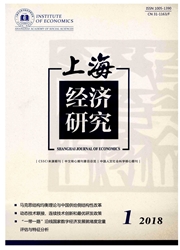

 中文摘要:
中文摘要:
物价水平飞速上涨、就业形势日益严峻和FDI流入规模大幅增长已成为中国经济高速增长背景下的三大显著特征。本文在分析三者互动机理的基础上,运用货币交换方程和Cobb-Douglas生产函数构建了检验就业水平、通货膨胀和FDI流入三者之间相互影响的模型,并采用中国1985-2012年相关数据,分别从总体、部门及区域三个层面检验了三者在长短期的特定表现。主要结论有:三者都对其自身具有显著的正反馈效应;Phillips curve存在于长期的总体层面及中西部地区;就业水平与FDI流入之间主要表现为长期的良性互动关系;通货膨胀与FDI流入之间的相关性在总体层面不显著,但在不同部门及不同区域间的差异性较大。
 英文摘要:
英文摘要:
The employment situation is increasingly stern, and the level of price rises rapidly and The scale of FDI inflows increased rapidly are three significant characteristics and trends under the background of China's rapid economic growth. Based on the analysis of the interaction mechanism of the above three, the VAR model is constructed through utilizes monetary exchange equation and the Cobb- Douglas production function, and then, we make an empirical research from different aspects by using China's annual data from 1985 to 2012. The main conclusions are as following: employment, inflation and FDI have significant positive effects on themselves; Phillips curve exists only in the aggregate aspect and central and western region in the long term ; there are mainly significant positive between employment and FDI in the long term; the relationships between inflation and FDI are not significant in the aggregate aspect, but significantly different in the different sectors and regions.
 同期刊论文项目
同期刊论文项目
 同项目期刊论文
同项目期刊论文
 期刊信息
期刊信息
